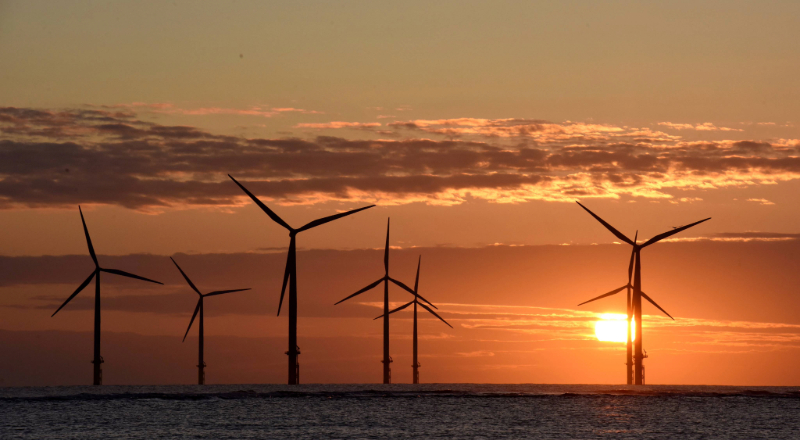COP29: Supporting the move to decarbonisation
By
Professor Dawid Hanak
Professor of Decarbonisation of Industrial Clusters
As COP29 draws to a close, the global stage is again set to address the most pressing climate issues of our time. The summit in Baku, Azerbaijan, has already been dubbed the 'Finance COP' and with good reason—funding and the mechanisms that govern its flow will be at the core of all meaningful climate action. For those of us who work at the intersection of industry and sustainability, particularly within industrial clusters, COP29 represents both a critical juncture and a unique opportunity to accelerate decarbonisation in sectors traditionally challenging to abate.

The Role of Industrial Clusters in the Net Zero Transition
Industrial clusters, broadly seen as geographic concentrations of industries sharing infrastructure, resources, and emissions, are a pivotal target for decarbonisation efforts. These clusters are responsible for a significant share of industrial emissions, often located near coastal areas, contributing substantially to national GDPs while being highly carbon intensive. However, their compact and interconnected nature presents a unique opportunity: decarbonising one industry within a cluster can create a ripple effect, enabling adjacent industries to transition more effectively through shared infrastructure, such as that for hydrogen, carbon capture, and renewable energy that is currently being developed at the Teesside Industrial Cluster in the UK.
Here at Teesside University, through our Net Zero Industry Innovation Centre, were are helping drive the transition to a green future in Teesside Industrial Cluster and beyond by forging connections between industry, research facilities and higher education in areas such as hydrogen, smart energy, carbon capture and the circular economy.
The global challenge, however, is the unprecedented scale of investment and innovation required. This is where COP29 can be transformative. Ambitious new climate finance targets set at the summit can open the capital needed to finance large-scale transformations.
Financing the Transformation
At COP29, discussions around the new collective quantified goal (NCQG) for climate finance will be crucial. The original $100 billion target was a starting point, not the destination. For industrial clusters, the investment required is substantial, as we are fundamentally rethinking how global industries produce, use energy, and manage their carbon emissions.
Such transformation will require blended finance models, combining public funding, private investment, and innovative instruments such as carbon markets. The Bridgetown Initiative, championed by Barbados Prime Minister Mia Mottley, offers a framework for engaging multilateral development banks (MDBs) to scale up investments in climate-resilient, low-carbon pathways. Industrial clusters can benefit significantly if MDBs triple their annual lending by 2030, directing essential resources towards shared infrastructure, such as carbon capture and hydrogen networks, that are too expensive for individual entities to finance alone.
The recent net zero commitments in the UK demonstrate how such blended finance models can work. The new UK government committed £22 billion over 25 years to support carbon capture infrastructure at Teesside and Merseyside, aiming to meet climate targets and revitalise British industry. This is expected to bring over £8 billion of private investment to these regions. Such blended finance models provide the stimulus to establish shared infrastructure and accelerate the transition to a low-carbon economy.
Here at Teesside University, through our Net Zero Industry Innovation Centre, were are helping drive the transition to a green future in Teesside Industrial Cluster and beyond by forging connections between industry, research facilities and higher education in areas such as hydrogen, smart energy, carbon capture and the circular economy.
Phasing Out Fossil Fuels: The Beginning of the End
Another key focus at COP29 is the global phase-out of fossil fuels, building on the progress made at COP28. For industrial clusters, this transition is particularly challenging due to their reliance on fossil fuels as both an energy source and feedstock. Making such a shift at the global scale is difficult, primarily due to the high cost of low-carbon alternatives.
To accelerate this shift, policymakers must create a stable regulatory environment paired with sufficient incentives to de-risk investments in low-carbon infrastructure. Clusters in regions like Teesside in the UK, Rotterdam in the Netherlands, and Ulsan in South Korea are emerging as testbeds for hydrogen adoption and CCUS technologies, proving that industrial transformation is possible. For example, on 1 October 2024, the UK ceased using coal to generate electricity, a year earlier than planned.
The Social Element: A Just Transition for Workers and Communities
No discussion on decarbonisation is complete without considering the social element. Industrial clusters are not just collections of factories; they are communities with workers who have devoted decades to their craft. The challenge at COP29 is to ensure that the transition is equitable, meaning that we are not just decarbonising facilities, but also upskilling workers, creating new opportunities, and ensuring that the economic benefits of decarbonisation are shared broadly.
Therefore, the concept of a just transition should be embedded in every Nationally Determined Contribution (NDC) and financing package. Such investments in skills, education, and local infrastructure will provide continuity for the existing communities, transforming them into ambassadors for the green industrial revolution.
Conclusion
COP29 is about more than setting a new climate finance target—it is about reshaping how we think about and invest in industrial decarbonisation. What industrial clusters need most is certainty—certainty in finance, regulatory frameworks, and the long-term commitment of governments to support green infrastructure development. COP29 can be a turning point if global leaders move from rhetoric to action, from pledges to implementation, and from ambition to genuine collaboration.
 Teesside University-led team makes National Geographic's
...
Teesside University-led team makes National Geographic's
... Green light for collaboration on medical school proposal
Green light for collaboration on medical school proposal In Conversation in the capital with television architect
In Conversation in the capital with television architect 